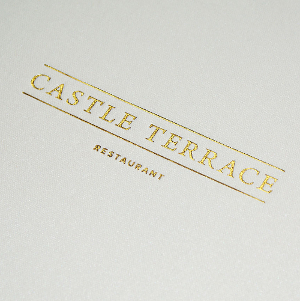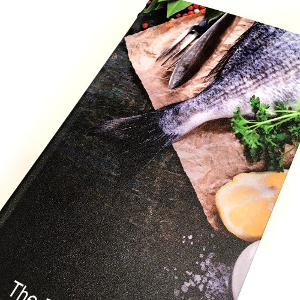100's of Products

Full Personalisation

Hand Crafted

Worldwide

Materials
We stock the largest range of materials to give our clients the possibility of creating the exact product that they are looking for. Each of these materials come in a huge range of colours so you will never run out of options for your menu. Choose from everything from matte to shiny finishes, smooth to textured and bright to dark.
Leathers
Real Leathers
Our leather materials consist of the highest quality real leathers to the most realistic faux leathers. The saddle hide menu cover is made from one piece of thick real saddle hide leather, whereas, the real leather menu folders are created with Italian-made leather which is wrapped around a strong board. Saddle hide is available in traditional colours and real leather is available in a host of colours and textures
Semi-real Leathers
Created as sustainable materials, our bonded and hydra recycled leathers are 85% genuine leather which has been collected from tannery waste. Both available in traditional and rich colours, hydra is a smooth leather, whereas bonded leather comes in a few different textures.
Faux Leathers
In faux leathers, we offer Stitched Hide, Elephant Grain and Vivella restaurant menu binders. Elephant grain is a grainy faux leather which is very realistic. Stitched hide is the smooth counterpart to Elephant grain as they are made from the same material and come in similarly traditional leather colours. Finally, Vivella is a leather-look material which is soft to the touch. Vivella comes in a huge range of colours and is very durable.
Fabrics
Textiles
Buckram is one of our most durable and popular materials. This coated cotton material is easy to clean and comes in an impressive range of colours. Hessian is similar to buckram, but it is uncoated and made from jute fibres. This eco-friendly material comes in a modest range of organic colours.
Coated Paper
Our Pellaq and Shadow materials are some of the most striking. Pellaq is a strong coated paper which is textured to look like a luxurious animal skin available in rich colours, this is a popular material for those wanting to make a statement. Similarly, shadow comes in striking colours, but is more commonly known for its bright and bold colours. Available in a range of interesting patterned textures.
Metals
Real Metal
Our real metal is made from aluminium which is known for its strength. This comes in silver, gold and copper as standard but can come with your desired brushing or galvanisation.
Faux Metal
Our faux metals are both strong coated papers. Metal X and Carbon X are the lookalikes of metal and carbon. Choose your texture, colour and brushing for the realistic metal look that you are after.
Plastics
Our American style menu covers are made from a clear plastic which is bound together with the durable buckram material. Seen in many venues around the world, this is an inexpensive material which is incredibly simple to use.
The padded PVC material is a plastic which is similar to that of school binders. a smooth plastic material which is available in a range of bright colours for an arty effect.
Woods
Real Woods
Our real wood material is made from a high grade wood which is expertly crafted to make a smooth and high quality product. Real wood is available in a huge range of colours and lends itself to engraving very well.
Our wood veneer material is used to make our digitally printed wooden menu covers and has a flat surface which is ideal for printing on to. This material is also perfect for engraving and fret cutting logos on to.
Faux Woods
Acero is a faux wood material which is soft to the touch. The stunning grain and pattern makes it look almost identical to untreated woods. This material comes in many different colours that can't be found in real wood materials. Wood effect is similarly resembling of wood, but comes in more traditional colours and has a harder and smoother finish.
Fixings
Cord & Eyelet
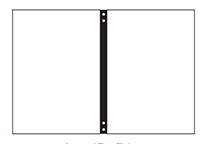
The cord & eyelet fixing is designed to work with protective PVC pockets which you simply slide your menu inserts into. The cord is used to hold the pockets in
Internal Cord
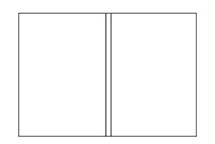
The internal cord fixing is similar to the cord and eyelet, but is designed to hold folded paper only. For instance, if you were fitting inserts in to a 1/2 A4 cover, you would need to fold an A4 piece of paper or card in half and slide it underneath to cord to display. A very easy to use an unobtrusive design.
External Screw
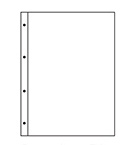
The external screw fix is visible from the outside of the cover. Screws are threaded right through the menu cover and hole punched paper to hold the entire menu display together for a strong fixing. You can thread the screws by hand, there is no need for a screwdriver.
Internal Screw
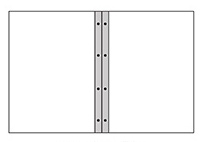
The internal screw fix is similar to the external screw, except it is not visible from the outside. Flaps come from the inside spine for you to thread screws through and clamp the hole punched paper in between.
Corner Mounts
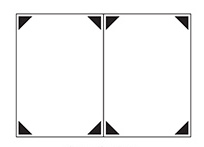
Corner mounts are designed as pockets in each corner which allow you to slide the corners of your inserts underneath for an elegant display. This is particularly effective on fabric menu boards.
Parallel Bars
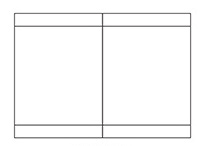
Similar to corner mounts, the parallel bar system uses two pockets that run across the top and bottom to allow you to slide the paper underneath each for a secure fixing.
Grip Fix
The grip fix is a similar method to a plastic binder which you can simply slide paper inside to create a spine that securely grips the menu insert.
Magnet Fix
The magnet fix is exactly as it sounds, grip the paper between two magnets which are discretely hidden within the material of the menu. This is one of the easiest to use fixing options.
US Frames
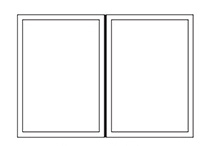
A US frame is two pieces of clear plastic that are bound together with a fabric material around the perimeter. With one opening, simply slide your insert between the two plastic pieces for a protective fixing. These pockets can be fastened in to the menu cover.
Picture Frames
Similar to US frames, simply slide your paper in to the picture frames and behind the clear acetate. The border of the picture frame will slightly cover your insert, framing it nicely.
Booklet Holder
The booklet holder is designed to do exactly that - hold booklets. A vertical pocket is placed on each side of the menu cover for you to slide the outer sleeves of your booklet in to.
Concertina
The concertina fixing is a permanent fixing which folds the menu insert just like a concertina. On each side is a board made from your chosen material, and each board is connected by your menu insert with a concertina style fold.
Personalisation
Not only can we personalise the shape, size, material and colour of your menu, but we can add your logo or artwork too. These are the methods that we can use to give you the desired effect for your logo or artwork.
Debossing
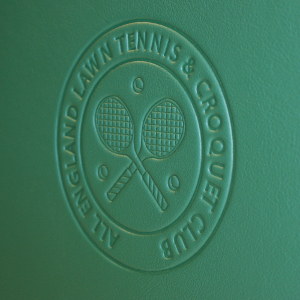
Debossing is the process of recessing into material - the opposite of embossing which is to raise up from the material. The result is an indentation in the material of the cover. Debossing works wonderfully for a subtle and elegant menu design and can be applied to almost any of our materials.
To recess artwork or a logo, a stamp (or blocking plate) is required. We only charge a one off fee for the creation of the blocking plate and then we will deboss as many covers as you require with that same artwork or logo.
Hot Foil
Hot foil stamping is similar to debossing, however before we start, we add a piece of foil to the stamp and heat it up. When we stamp, the parts of the foil that make contact with the menu are left behind to create a one colour logo. We have a huge range of foil colours, so you could match almost perfectly to your branding. This method can also be applied to almost all of our materials. Hot foiling does leave a slight indentation in the material as well, but not as deep as when we deboss.
We also only charge for the creation of the stamp with hot foil. So no matter how many menus you are having foiled, there is only a single charge.
Digital Print
We use a high quality full digital print which, unlike other techniques, allows you to print in as many different colours as you like. With digital print method, you can add everything from photographs to maps and everything in between. This can be used in conjunction with debossing, metal plate and hot foil techniques to add even more interest and texture to your design.
Although this technique looks fantastic as the main focal point of a menu, it has become increasingly popular for just the inside of the menu, which gives a beautiful contrast against a plain covering material.
Metal Plate
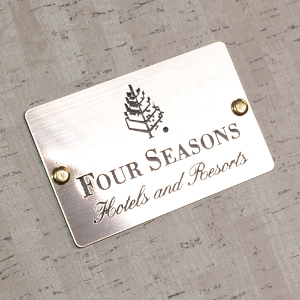
This technique uses a metal plate which is digitally printed with a design or logo, and then applied to your menu. Using this technique, you can have a full colour print on the metal plate. This method is reminiscent of high technicality engineering and works brilliantly in an industrial style venues in particular.
Engraving
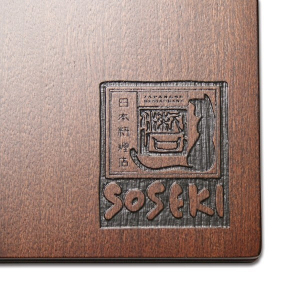
Engraving is a classic technique that is still as popular today as any other time in its long history. Now, with laser engraving techniques, we are able to accurately engrave designs at minimal costs. Available only on our wooden and metal products and some acrylic products, this method creates a stunning effect.
Engraving is to cut a layer from the top of the material to leave an indented pattern, artwork or logo. Leaving a similar effect to debossing, engraving can be used for more intricate patterns and works on different materials.
Screen Printing
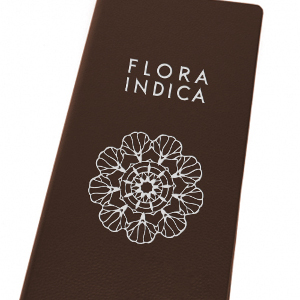
The screen printing technique uses a stencil cut out in to the shape of your artwork and then ink is applied over it. With this technique it is possible to create single colour artworks with no recession in to the material at all. Or, with the use of multiple stencils, multi-coloured artworks can be created.
This method is available on the majority of our materials.
Product Size Options
Although we can make our menus to any size that you require, we have a standard range of sizes which covers the needs of most enquiries. We design our menus to be slightly larger than the paper size so that your inserts fit in without showing on the perimeter.
A3
Generally suited more for menu boards and wall mounted menus, A3 can usually fit a whole menu on one side.
A3 paper size is: 297mm(W) x 420mm(H) (11.7in x 16.5in)
A4

A4 is the most popular size by far and is usually purchased for a main menu or for all menus in one. This is the perfect size for menu boards and menu covers alike.
A4 paper size is: 210mm(W) x 297mm(H) (8.3in x 11.7in)
A5

A5 menus are also very popular and are used for many different types of menus, but particularly for drinks and cocktail menus. The small size is very easy to handle and unobstructive when stood on a bar top.
A5 paper size is: 148mm(W) x 210mm(H) (5.8in x 8.3in)
2/3 A4
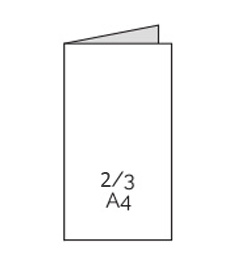
2/3 A4 is the same height as A4 but 2/3 the width. This is particularly popular for desserts and starters lists or as a main menu with slightly less bulk than a standard A4.
2/3 A4 paper size is: 140mm(W) x 297mm(H) (5.5in x 11.7in)
1/2 A4
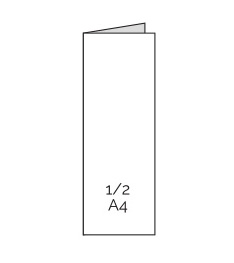
1/2 A4 is the same height as A4 but half the width. This is very popular as a drinks list cover or wine list cover. This is also particularly suited to an internal cord fixing due to being able to use a standard A4 piece of paper.
1/2 A4 paper size is: 140mm(W) x 297mm(H) (5.5in x 11.7in)
Square

Square menu covers are used for many different applications and are normally suited to main menus as something a bit different from the standard A4 size.
Square paper size is: 210mm(W) x 210mm(H) (8.3in x 8.3in)
Get In Touch
Contact Us
Telephone
Midlands 01743 465 301
International +44 1743 465 301

